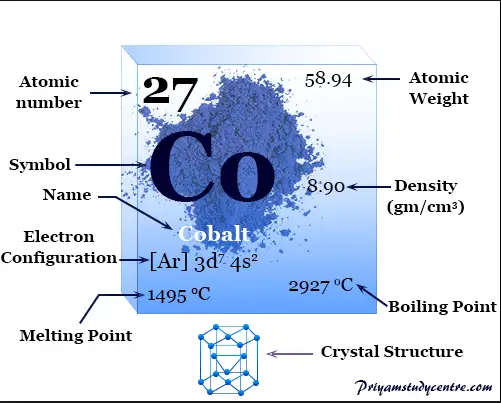Cobalt compounds are integral to numerous industrial applications, yet two variants, cobalt oxide and cobalt carbonate, often stir confusion due to their distinct characteristics and uses. Each plays a critical role in modern technology and manufacturing processes, exhibiting unique properties that cater to specific industry needs. The differentiation between these compounds is crucial for chemists, manufacturers, and engineers alike, impacting decisions from production methods to application development.
Cobalt oxide is primarily used as a colorant in ceramics and glass and plays a pivotal role in the manufacturing of batteries and catalysts. On the other hand, cobalt carbonate is used extensively in the preparation of pigments, as well as in animal feed as a nutritional supplement. These uses underscore their importance and the necessity to distinguish clearly between them for appropriate application.
Despite their similar names, cobalt oxide and cobalt carbonate differ significantly in chemical composition, physical properties, and industrial applications. This distinction not only affects their performance in various settings but also influences environmental and safety considerations associated with their handling and disposal.

Cobalt Oxide Overview
Definition and Basic Properties
Cobalt oxide (Co3O4) emerges as a significant chemical compound predominantly recognized by its black to olive-green color. It exhibits an intricate structure that features both Cobalt(II) and Cobalt(III) in a closely packed oxide framework. Its amphoteric nature allows it to react both as a base and as an acid, making it highly versatile in chemical reactions.
Key Industrial Uses
The practical applications of cobalt oxide are extensive and impactful across various industries:
- Ceramics and Glass: Cobalt oxide is used to impart a rich blue color to ceramics and glass, an attribute cherished in artistic and commercial productions.
- Battery Production: It serves as a vital component in the cathodes of lithium-ion batteries, enhancing the energy efficiency and longevity of these power sources.
- Catalysis: In the realm of chemical processes, cobalt oxide is employed as a catalyst in the hydro-treatment of crude oil and the synthesis of biofuels, improving the efficiency and environmental sustainability of these processes.

Cobalt Carbonate Overview
Definition and Basic Properties
Cobalt carbonate (CoCO3) presents itself as a reddish-pink compound that is less commonly encountered but crucial in its niche applications. This salt is most typically found in a crystalline form and is relatively unstable when exposed to acids, with which it reacts to form CO2 and cobalt(II) salts.
Key Industrial Uses
Cobalt carbonate holds a special place in several key areas of industry:
- Pigments: The compound is a primary source of cobalt for ceramic glazes and paints, offering vibrant colors that are otherwise difficult to achieve.
- Animal Feed: As a nutritional supplement, cobalt carbonate is added to animal feeds to prevent cobalt deficiency, supporting the health and productivity of livestock.
- Metal Refining: It acts as a precursor to other cobalt compounds used in superalloys and tool steels.
Chemical Properties
Composition and Structure
Cobalt oxide consists of a mixed valence compound where Cobalt exists in two oxidation states, Co2+ and Co3+, arranged in a spinel structure which is characteristic of its form. Conversely, cobalt carbonate contains cobalt solely in the +2 oxidation state, coordinated by carbonate groups in a trigonal planar arrangement.
Stability and Reactivity
- Cobalt Oxide: It is relatively stable under normal conditions but decomposes at high temperatures to form cobalt(II) oxide.
- Cobalt Carbonate: This compound is sensitive to acidic conditions, readily decomposing into CO2 and cobalt(II) salts, which highlights its reactivity pattern.
Physical Properties
Color and Form
- Cobalt Oxide: Recognizable by its dark color, ranging from olive green to jet black.
- Cobalt Carbonate: Exhibits a distinct pink to red hue, which is highly valued in the creation of pigments.
Solubility and Melting Points
- Cobalt Oxide: It exhibits moderate solubility in acids and is almost insoluble in water. Its melting point is high, typically above 1200°C, which is indicative of its stable structure.
- Cobalt Carbonate: Soluble in acids but practically insoluble in water. It decomposes before melting, which typically occurs at temperatures around 300°C to 350°C.

Production Methods
Cobalt Oxide Synthesis
The production of cobalt oxide involves several steps, often starting with the calcination of cobalt hydroxide or cobalt carbonate:
- Calcination Process: Cobalt salts are heated in the presence of air to convert them into cobalt oxide. This method ensures the precise control of the oxidation state needed for specific applications.
- Precipitation Method: Alternatively, cobalt oxide can be synthesized by precipitating it from cobalt salt solutions using a suitable oxidizing agent.
These methods are crucial for achieving the high purity and specific particle sizes required for industrial uses, particularly in electronics and catalysis.
Cobalt Carbonate Synthesis
Cobalt carbonate is typically produced using two main methods:
- Precipitation from Cobalt Salt Solutions: Cobalt sulfate or cobalt chloride solutions are treated with sodium carbonate under controlled conditions to precipitate cobalt carbonate.
- Direct Carbonation: In this method, carbon dioxide is passed through a solution of cobalt(II) salts under controlled temperature and pressure to form cobalt carbonate directly.
These synthesis techniques are tailored to produce cobalt carbonate with properties that meet specific industry standards, particularly for pigment and feed additive applications.
Applications Comparison
Use in Ceramics and Pigments
Both cobalt oxide and cobalt carbonate are pivotal in the production of ceramics and pigments, but their roles differ slightly due to their chemical and physical properties:
- Cobalt Oxide: It is preferred for producing deep blue glass and ceramics. The intensity and stability of the color it produces are unparalleled.
- Cobalt Carbonate: While it also provides a distinctive color, it is generally used where lighter shades are needed or where the chemical interactions in the ceramic glazing process require carbonate instead of oxide.
Role in Battery Production
In battery production, cobalt oxide’s role is specifically prominent in lithium-ion batteries:
- Cobalt Oxide in Cathodes: It is used in the cathode material to improve the battery’s capacity and life. This makes it indispensable in portable electronics and electric vehicles.
Environmental Impact
Safety and Handling
Handling of cobalt compounds must adhere to strict safety standards due to their toxic nature:
- Protective Gear: Workers are required to use protective clothing and equipment to prevent skin contact and inhalation.
- Ventilation: Proper ventilation must be ensured in areas where cobalt compounds are handled to avoid inhalation of dust.
Disposal and Recycling
Disposal and recycling of cobalt compounds involve careful planning to minimize environmental impact:
- Recycling: Cobalt in batteries and other products is often recycled to recover valuable cobalt metal.
- Disposal: Non-recyclable cobalt compounds need to be disposed of in designated hazardous waste facilities to prevent environmental contamination.
Market Dynamics
Global Demand and Supply
The demand for cobalt compounds is driven by their wide range of applications, from electronics to ceramics:
- Growing Demand: The increasing use of portable electronics and electric vehicles has led to a surge in demand for cobalt oxide, especially for battery production.
- Supply Constraints: Political and economic instability in cobalt-rich regions can affect the supply, impacting global markets.
Price Trends and Factors
The pricing of cobalt compounds is influenced by several factors:
- Production Costs: The cost of mining and refining cobalt directly impacts the prices of cobalt oxide and carbonate.
- Market Demand: As the demand for cobalt increases, particularly for high-tech applications, prices tend to rise due to the tight supply-demand balance.
Frequently Asked Questions
What is Cobalt Oxide?
Cobalt oxide is a chemical compound that appears as a black or olive-green powder used predominantly in the ceramics and glass industries, and as a catalyst in battery and chemical manufacturing.
What is Cobalt Carbonate?
Cobalt carbonate is a reddish-pink compound primarily utilized in the creation of pigments, in addition to serving as a dietary additive in animal feed to promote health and growth.
How do Cobalt Oxide and Cobalt Carbonate differ chemically?
Chemically, cobalt oxide contains cobalt bonded with oxygen, whereas cobalt carbonate consists of cobalt attached to carbonate groups. This fundamental difference dictates their distinct behaviors and reactions in various industrial processes.
What are the environmental impacts of Cobalt Oxide?
Cobalt oxide can pose environmental hazards if not handled properly, especially concerning air and water pollution during its production and disposal processes.
What are the safety concerns with Cobalt Carbonate?
Handling cobalt carbonate requires precautions to avoid inhalation and contact with skin, as it can cause irritation and other health risks, necessitating stringent safety measures in workplaces.
Conclusion
Cobalt oxide and cobalt carbonate are more than just elements on the periodic table; they are pivotal in advancing technology and improving the quality of industrial products. Their distinct roles and properties make them indispensable in their respective fields, demonstrating the importance of understanding their differences for effective application. As industries continue to evolve, the demand for both compounds is expected to rise, emphasizing the need for sustainable practices in their production and utilization.
Recognizing the differences between these compounds not only enhances industrial efficiency but also contributes to more informed environmental policies and safer work environments. As we advance, the ongoing study and application of these materials will continue to play a crucial role in shaping a range of industries, from technology to agriculture.

